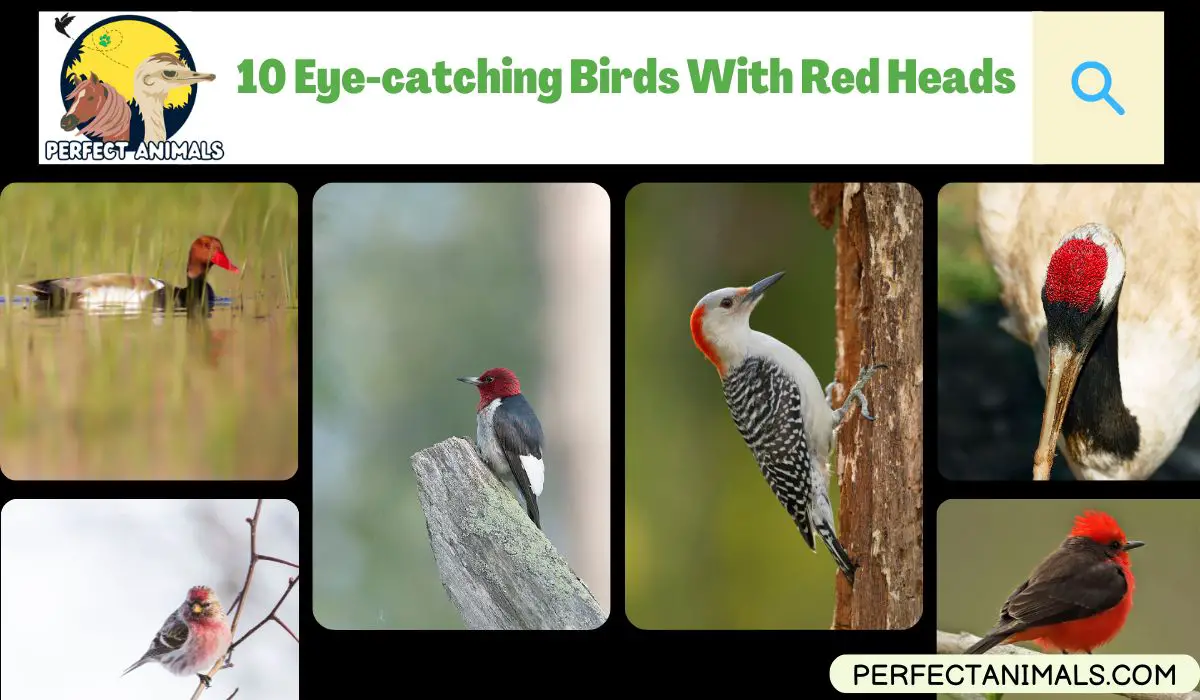Birds come in a spectacular array of colors and varieties, but some of the most visually striking species have bright red feathers on their heads.
These dazzling red crowns and crests make the birds easy to spot and recognize, even amongst the green forests or gray cityscapes they inhabit.
In this article, we’ll highlight some of the most vibrant red-headed birds from around the world.
From familiar backyard visitors like cardinals and woodpeckers to exotic waterfowl and endangered cranes, these crimson-crested birds surely catch the eye.
We’ll discuss some key identification features, preferred habitats, fun facts, and conservation status for our feathered, ruby-adorned friends.
Whether spotted perched proudly on a tree branch or seen swooping across open skies, these avian beauties flaunt plumage of pure, fiery red. It’s a color associated with passion and power in the natural world.
So let’s give these scarlet-topped creatures their due and appreciate the dazzle they bring to their ecosystems.
We’ll also explore some theories on why certain bird species evolve such conspicuous red feathers in areas otherwise dominated by greens and neutrals.
Birds with Red Heads
Northern Cardinal
The brilliant red plumage of the male Northern Cardinal makes it one of the most instantly recognizable backyard birds across much of North America.
Cardinals sport a signature bright red head, throat, crest, and upper breast feathers that stand out sharply amidst their other more muted brown-gray body plumage.
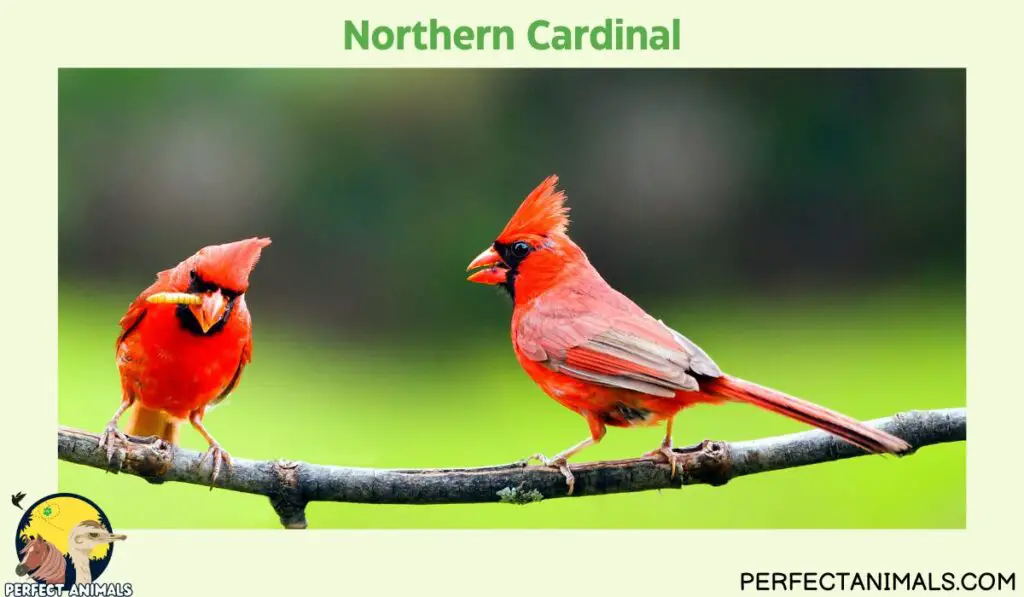
The Northern Cardinal’s rich ruby-red feathers signal vitality and enhance visibility during the breeding season.
Northern Cardinals inhabit thickets, woodland edges, swamps, parks, and backyards across eastern and central U.S. states.
The males’ flashy crest feathers are frequently used for both territorial displays against rival males and courtship displays to impress female cardinals.
This eye-catching red crest likely serves additional purposes like camouflaging cardinals against the vivid colors of autumn foliage.
Cardinals predominantly dine on seeds, fruits, and insects.
Their stout conical bills help crack open seeds and nuts.
Backyard bird enthusiasts can readily attract these beloved songbirds to feeders stocked with sunflower seeds, dried fruit, and nut pieces.
Cardinals vocalize loud whistles and melodies that stand out through the trees, with males singing boisterously to mark territory and finesse mating routines.
Related Article – Red Headed Sparrows
Red-headed Woodpecker
True to its exceptionally descriptive name, the Red-headed Woodpecker exhibits bold, saturated crimson-red feathers completely cloaking its head, throat, and upper neck.
This striking red hue covers the entire crown, hindneck, nape, and upper breast of mature adult birds.
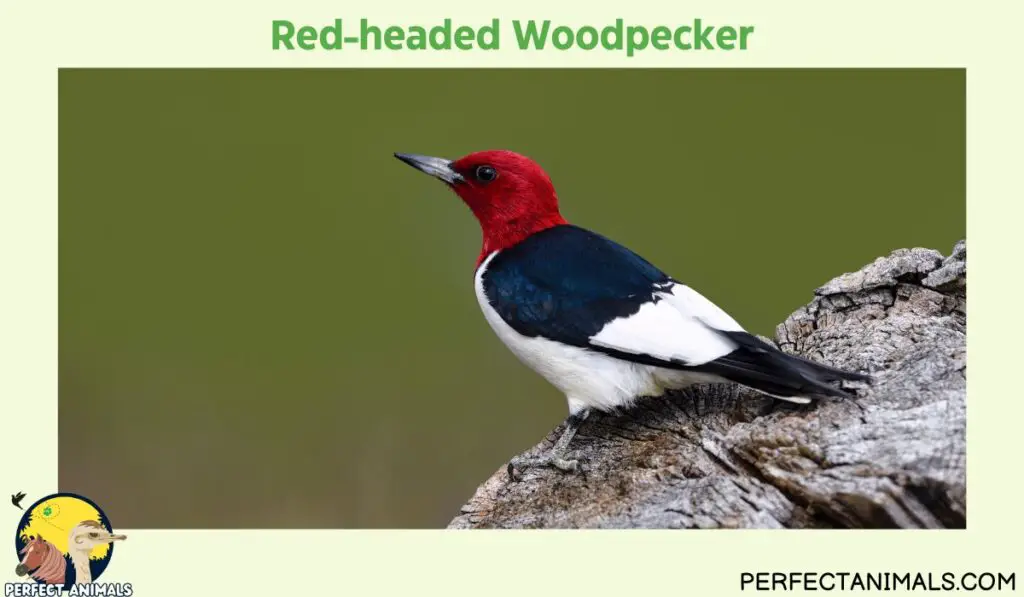
Meanwhile, the Red-headed Woodpecker’s back and wing plumage flaunt simple but elegantly contrasting patterns of stark black and bright white.
Red-headed Woodpeckers reside as year-round breeding pairs in open deciduous woodlands and oak forests with scattered mature trees across the central United States into southern Canada.
To nest and roost within their territories, breeding pairs painstakingly carve out the deadwood interiors of tree snags and limbs to create custom nesting cavities.
These handsome birds put their sharply chisel-tipped beaks to good use beyond just excavating homes.
Red-headed woodpeckers also hawk flying insects from high perches and gather hard mast foods like acorns or beechnuts from the forest floor.
Although normally rather social birds, they fiercely defend nest sites during breeding season even against much larger avian intruders.
Red-crested Pochard
The Red-crested Pochard represents a stunning wild duck species nesting across southern Europe and temperate central and southern Asia near wooded wetlands and lakes.
As its name suggests, the male’s head sports a fluffy short upright crest of fiery russet-red feathers, along with an equally radiant coral-red bill and irises.
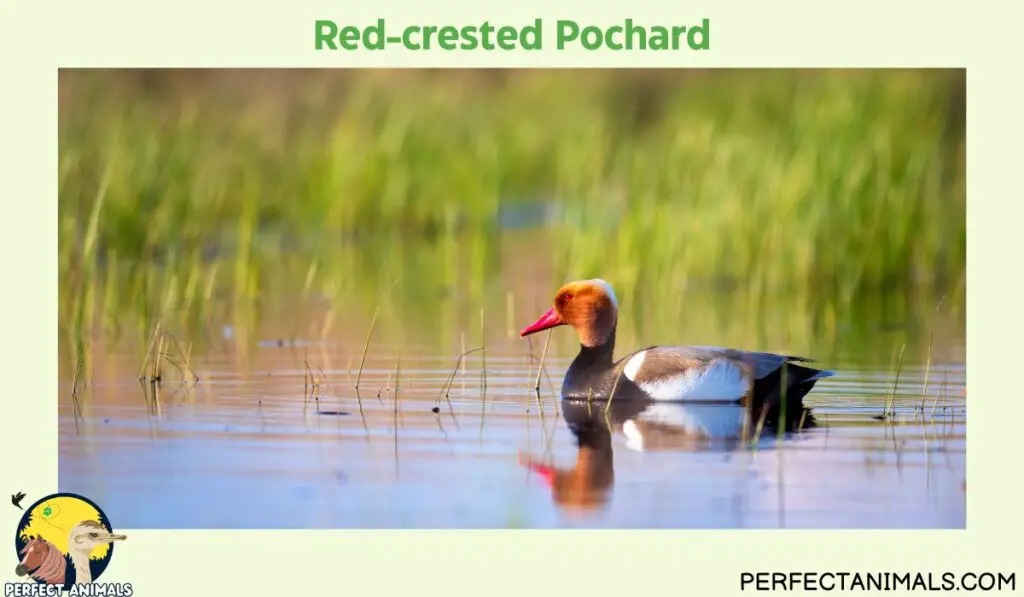
The male’s upper back feathers and flanks also gleam with various handsome hues of dark reddish-brown.
Meanwhile, female red-crested pochards appear rather dull plain brown all over – making for a very interesting study of sexual dimorphism between genders.
Red-crested Pochards frequent well-vegetated marshes, ponds, and shallow lakes ranging from fresh to somewhat brackish waters.
These diving ducks often tip upside down entirely to snatch aquatic invertebrates, insects, plants, and submerged seeds from the silty lake bottom.
Males perform remarkable whistling courtship displays while puffing out chest feathers and vigorously nodding their crimsoned heads.
Though still widespread, Red-crested Pochard numbers are gradually declining due to habitat degradation and hunting pressures.
You May Also Like – What Birds Lays Blue Eggs?
House Finch
The sociable, musical House Finch ranks among the most successful avian urban adapters in North America.
Since first being introduced from Mexico to the eastern U.S. in 1940, it continues expanding its range dramatically.
Today, House Finches reside as commonplace birds in suburbs, farms, orchards, and backyards across almost all the contiguous United States and Mexico.
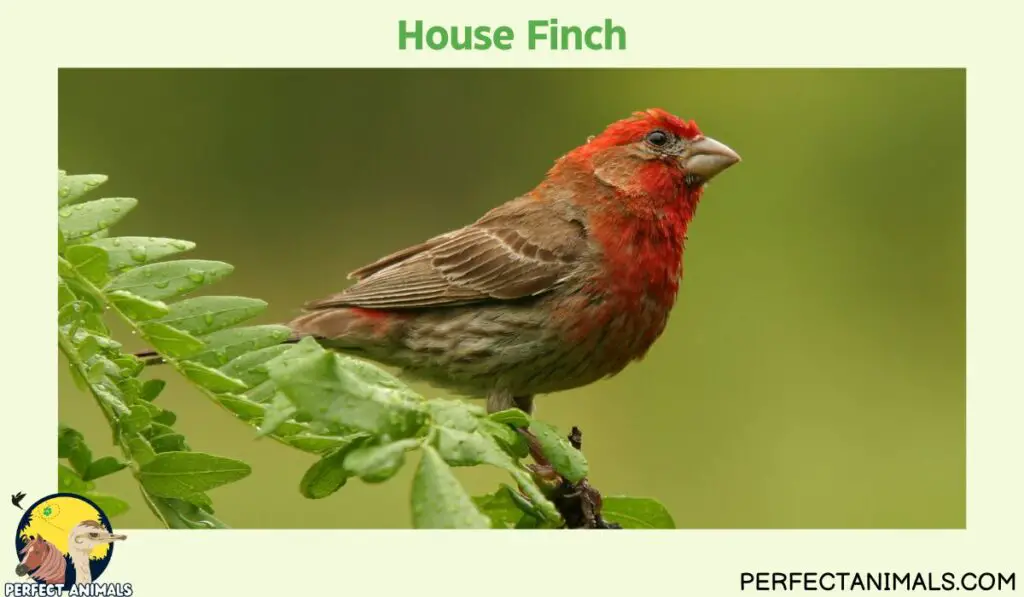
The male House Finch’s cheery red head feathers, encompassing the crown, throat, breast, and rump, make this songbird’s gender easy to discern.
Females and juveniles instead wear streaky brown and white plumage with subdued markings instead of vibrant red.
House Finches construct elaborate woven nests in protected artificial or natural vegetated sites and breed up to 5 times per year. They travel and forage in energetic flocks during winter off-season.
Common Redpoll
The Common Redpoll is a type of fringilline finch that breeds across the remote Arctic and subarctic tundras in northern Canada and Alaska.
Despite its remote northern range, redpolls are considered irruptive species – meaning nomadic flocks sporadically migrate south and roam more eastern parts of North America during winter when food becomes scarce in their harsh native realm.
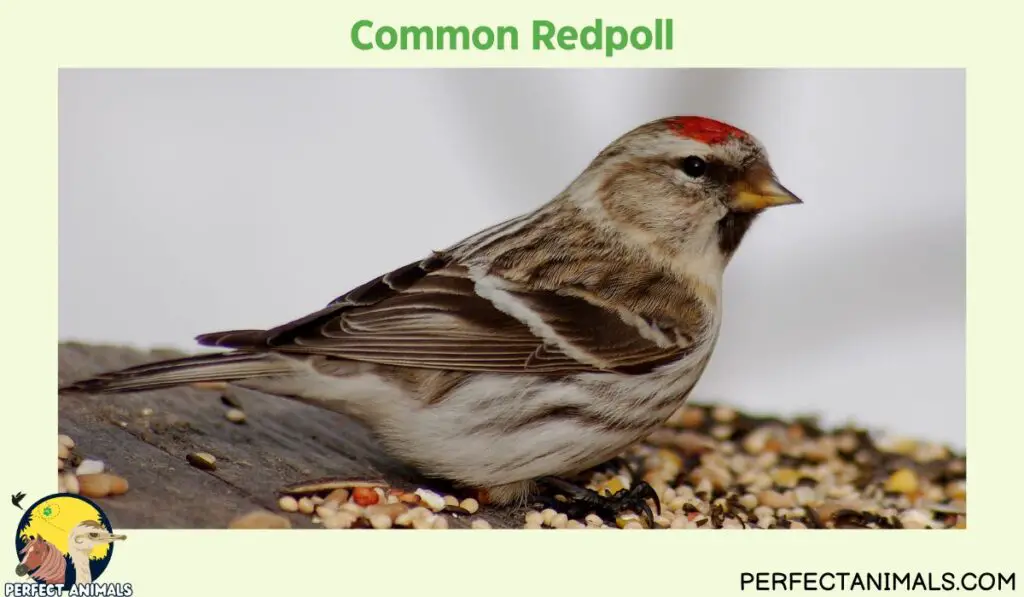
The male Common Redpoll is easy to identify thanks to the deep crimson-red plumage boldly blanketing its forehead and cap.
This flashy red crest provides stark contrast alongside the white face feathers surrounding the colorful crown.
Female redpolls lack such vibrant coloring and instead don drab grayish-brown coats.
In keeping with their Arctic adaptation, Common Redpolls boast thick layers of downy feathers and insulating coatings of fluffy plumage to endure frigid northern temperatures.
Redpolls primarily dine on small seeds gathered from alders, birches, and boreal conifers – using a uniquely notched bill structure to efficiently crack open their dietary staples.
Between breeding seasons, these highly social songbirds gather in immense roaming flocks numbering thousands of twittering individuals.
Related Article – Top 10 Birds With Long Beaks
Red-bellied Woodpecker
While not quite as vibrantly ruby-hued as the iconic Northern Cardinal, the Red-bellied Woodpecker does possess a lightly reddish-tinged belly plumage along with definite red accents marking its head.
Specifically, adult Red-bellied Woodpeckers exhibit crimson-colored feathering on the forecrown and upper hindneck – with adult males showing extended red coloration toward the entire crown and nape.
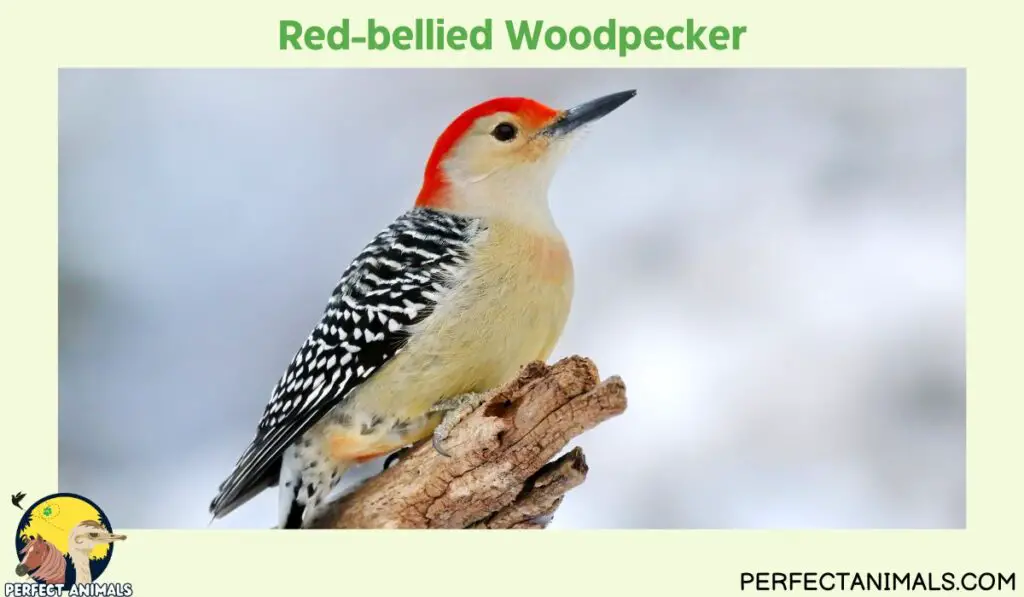
Despite its name seeming to suggest otherwise at first glance, the main body contour feathers covering a Red-bellied Woodpecker’s underbelly and abdomen region tend to appear more beige or pale grayish-beige than truly red.
This mid-sized woodpecker displays barred black and white patterns across its back and displays white wing bars as another distinguishing mark.
Found year-round inhabiting mature open forests, swamps, and second-growth woodland habitats throughout the eastern U.S. states, the Red-bellied Woodpecker’s range also extends into southern California and parts of northeast Mexico.
It bores signature rectangular cavities into tree trunks and branches for roosting and nesting purposes.
Related Article – 10 Amazing Birds With Long Legs
Pine Grosbeak
The Pine Grosbeak represents an eye-catching red finch occupying the spruce and fir conifer forest habitats stretched across Canada, Alaska, and the northernmost mountainous western U.S. regions.
True to their shared name, Pine Grosbeaks feed extensively on pine seeds, and the adult males in particular showcase gorgeous deep crimson-red plumage blanketing the head, upper back, rump, and shoulder areas.
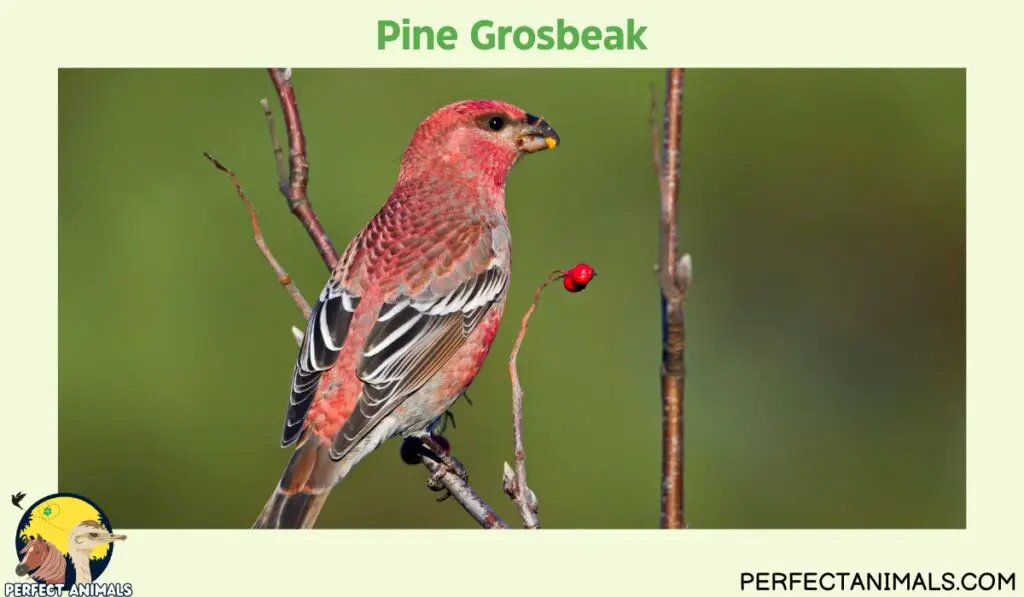
Meanwhile, adult female Pine Grosbeaks display elegant gray-brown coloration with slightly duller red-orange accents concentrated on the head and rump.
The female’s more camouflaging muted palette likely helps conceal her from predators and harsh elements while incubating eggs.
In addition to pine nuts, Pine Grosbeaks will also forage on various other conifer seeds, buds, and some fruit such as crabapples to sustain themselves through frigid winters and high altitude conditions.
Between breeding seasons, they may descend into lower elevations and frequent backyards with reliable feeders.
Despite seasonal movements, Pine Grosbeaks largely reside year-round in their favored northern forests.
Vermilion Flycatcher
The strikingly colored male Vermilion Flycatcher stands out like a blaze of flames amidst Southwestern desert oases and scrublands.
True to its name, mature males flaunt vivid scarlet-red feathers across the crown, nape, and underparts, framed by a bold black face, wings, and back.
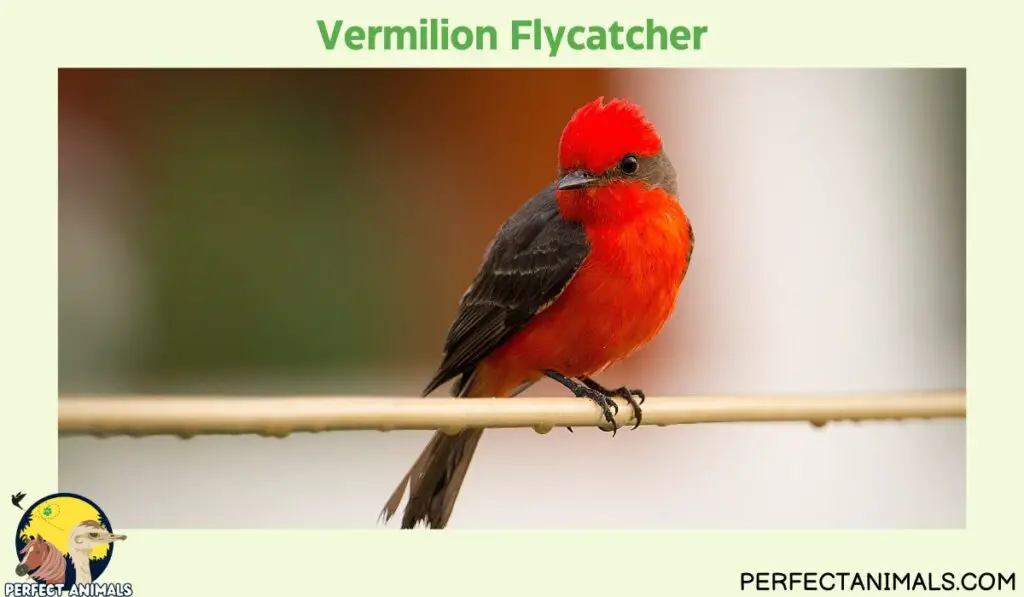
Their underside plumage visually pops even more thanks to the contrast against pale gray throat and belly regions.
Meanwhile, female Vermilion Flycatchers wear much more discreet and muted beige-brown plumage overall with almost no red.
Vermilion Flycatchers love to hawk aerial prey by sitting highly perched before dramatically dashing out to snatch insects mid-flight in spectacular acrobatic displays.
This desert specialist primarily breeds and nests throughout the arid landscapes spanning the U.S. Southwest into Mexico and sections of coastal Central America.
Conservation-wise, the Vermilion Flycatcher’s future depends on preserving precious desert riparian habitat against expanding human development.
You May Also Like – 12 Birds That Eat Spiders
Red-crowned Crane
Perhaps one of Asia’s most majestic avian giants also ranks among the world’s most vulnerable bird species.
Weighing nearly 15 pounds with wingspans exceeding 8 feet wide, the dazzling Red-crowned Crane stands almost 5 feet high!
Their feathers appear almost entirely snow white, except for an eponymous scarlet-red cap adorning the crown and black accents on the neck, wings, and long legs.
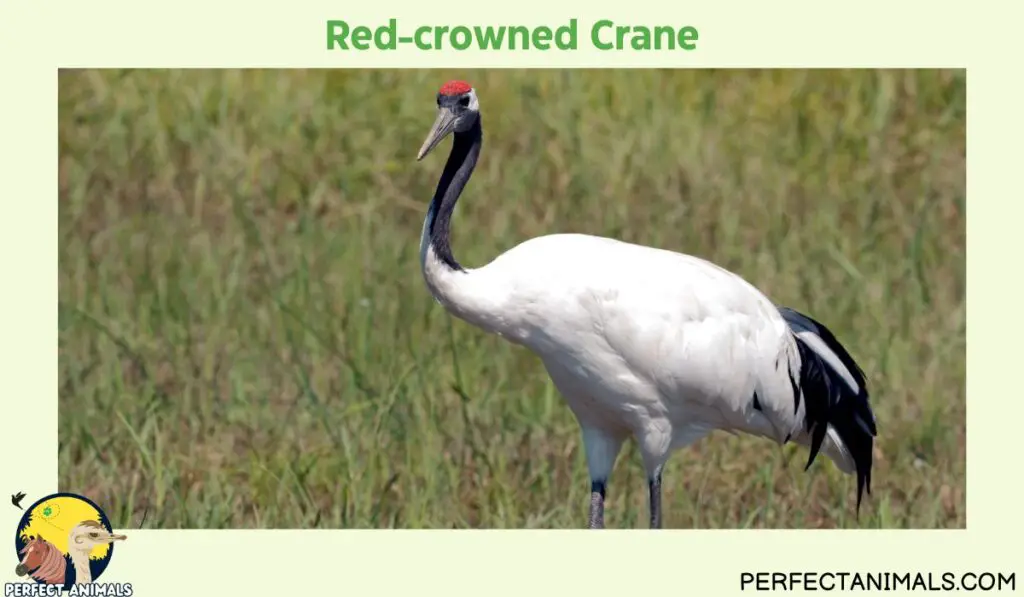
These extremely rare cranes migrate in Asia’s wetlands across China, Korea, Japan, and Russia.
Red-crowned Cranes display intricate synchronized mating dances, flaunting their crimson-tinted crest feathers.
Their piercing trumpeting calls ring for miles. However, these birds suffer immense threats from widespread wetlands drainage and degradation across eastern Asia.
They also fall prey to illegal hunters seeking their decorative red plumes.
Intensive captive breeding and release programs strive to maintain the survival of these severely endangered, revered cranes into the future.
Red Crossbill
The Red Crossbill represents a unique northern finch bearing an oddly crossed mandible structure perfectly tailored to prying seeds from hidden conifer cones.
Appropriately enough, males showcase rich red plumage blanketing their heads, breasts, rumps, and wing feather edges.
Their scientific name “curvirostra” actually means curved beak about the bill tips crossing each other.
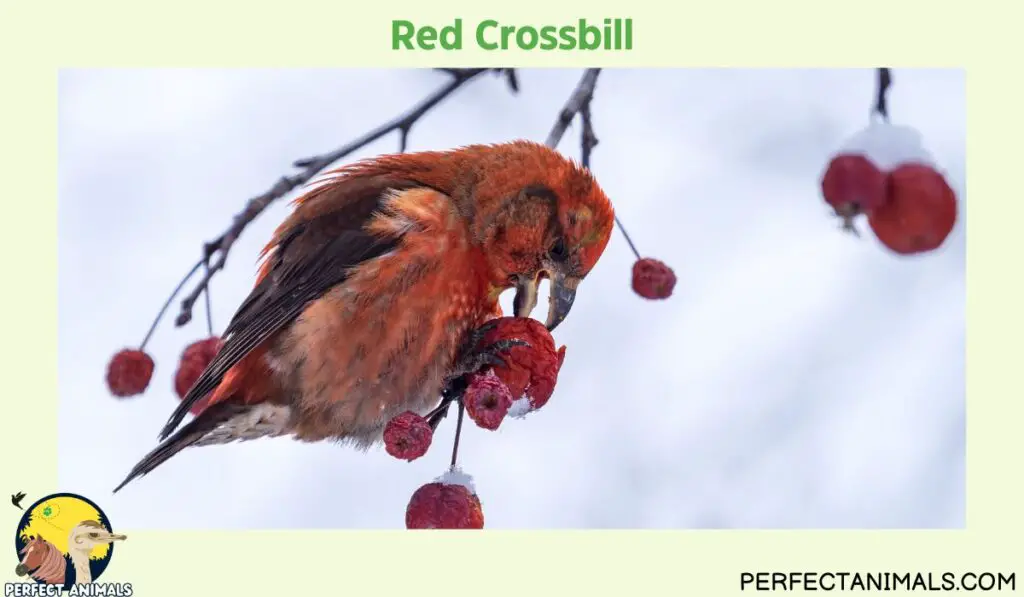
These nomadic birds reside year-round across North America’s extensive coniferous forests from Alaska through Canada and the Rocky Mountains.
Red Crossbills employ their specialized beaks like a pair of built-in needle-nose-pliers to adroitly extract otherwise inaccessible seeds buried deep within furled evergreen cones.
Different regional Crossbill populations evolved subtly different bill sizes and serrations to target specific conifer species predominant across various forest habitats.
You May Also Like – How Bird Poop Good Luck Can Boost Your Destiny
Final Thoughts
The birds showcased here represent just a sampling of the incredible avian diversity found worldwide.
Yet they share the dazzling trait of flashy red plumage crowning their heads.
These crimson caps and crests set them apart visually while serving functions from attracting mates to defending territories.
We explored red-feathered species at home in habitats as varied as backyard feeders, scorching deserts, northern forests, and Asian wetlands.
Ranging from tiny redpolls to towering cranes, red coloration links them together across continents and ecosystems.
Still, many red-headed birds face threats in a human-altered world. Preserving vital habitats will ensure their continued survival.
Beyond their aesthetic appeal, these birds play integral roles in maintaining food webs, regenerating forests, dispersing seeds, and pollinating plants.
If you spy a scarlet cap bobbing through the bushes, consider yourself lucky to witness nature’s flying red gems!
Resources – (for further reading)
All About Birds – Red-headed Woodpecker Identification | Northern Cardinal Identification
National Audubon Society – House Finch | Audubon Field Guide
eBird – Vermilion Flycatcher (Pyrocephalus rubinus)
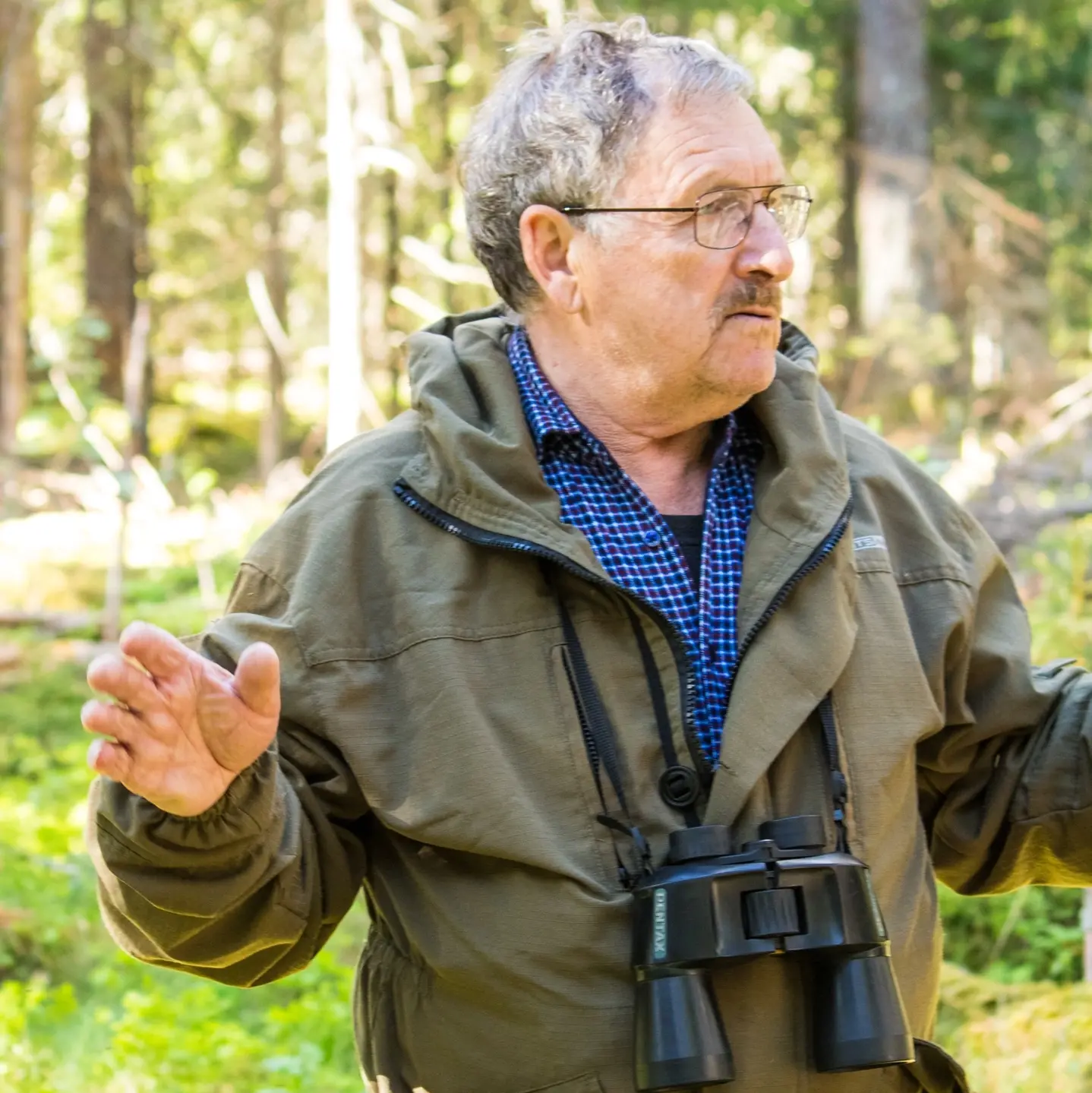
John Maloney, a passionate bird enthusiast since his childhood, has cultivated expertise in bird care and habitat conservation. Holding an MS in Wildlife Biology from the University of Florida, John has conducted significant research on endangered bird species and their ecosystems.

